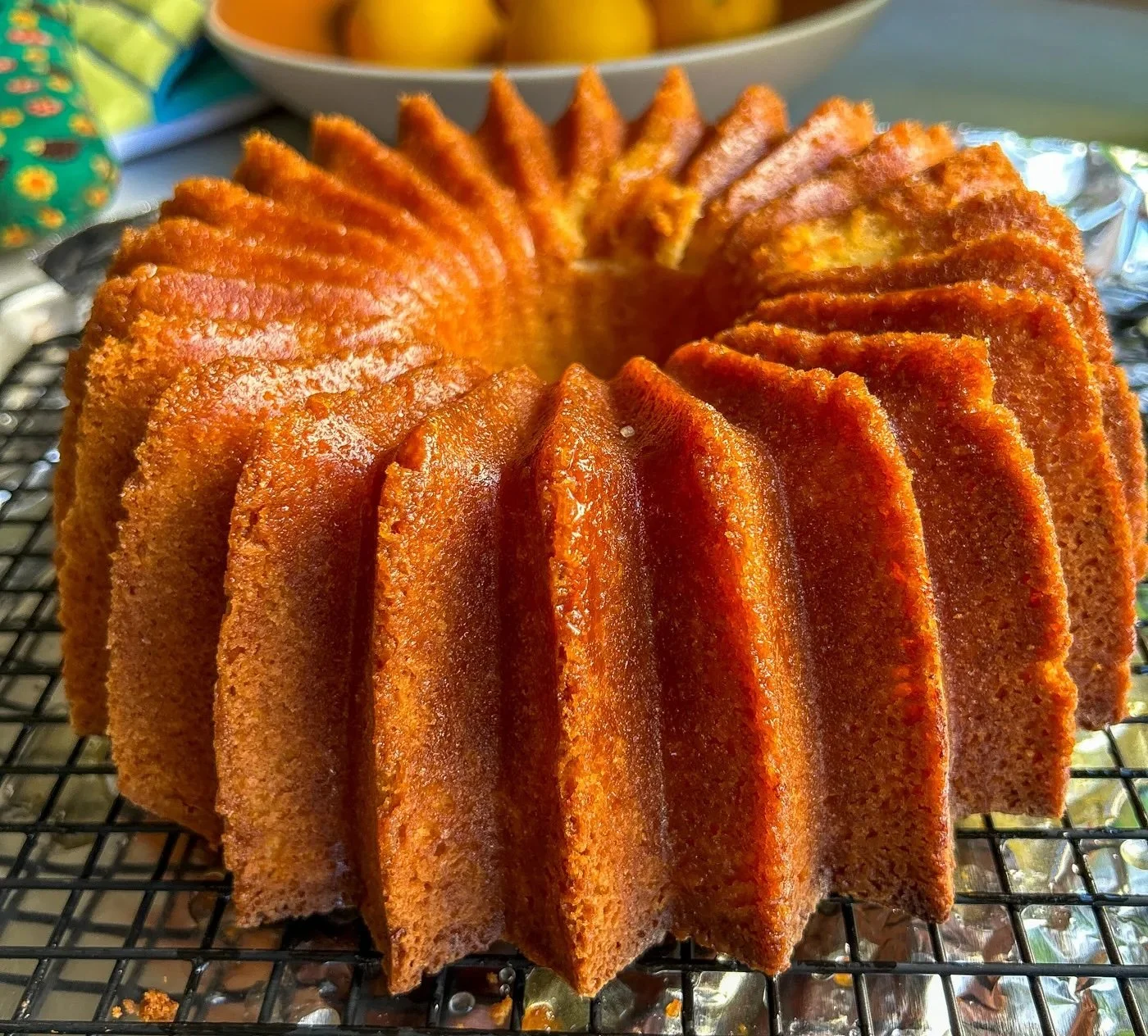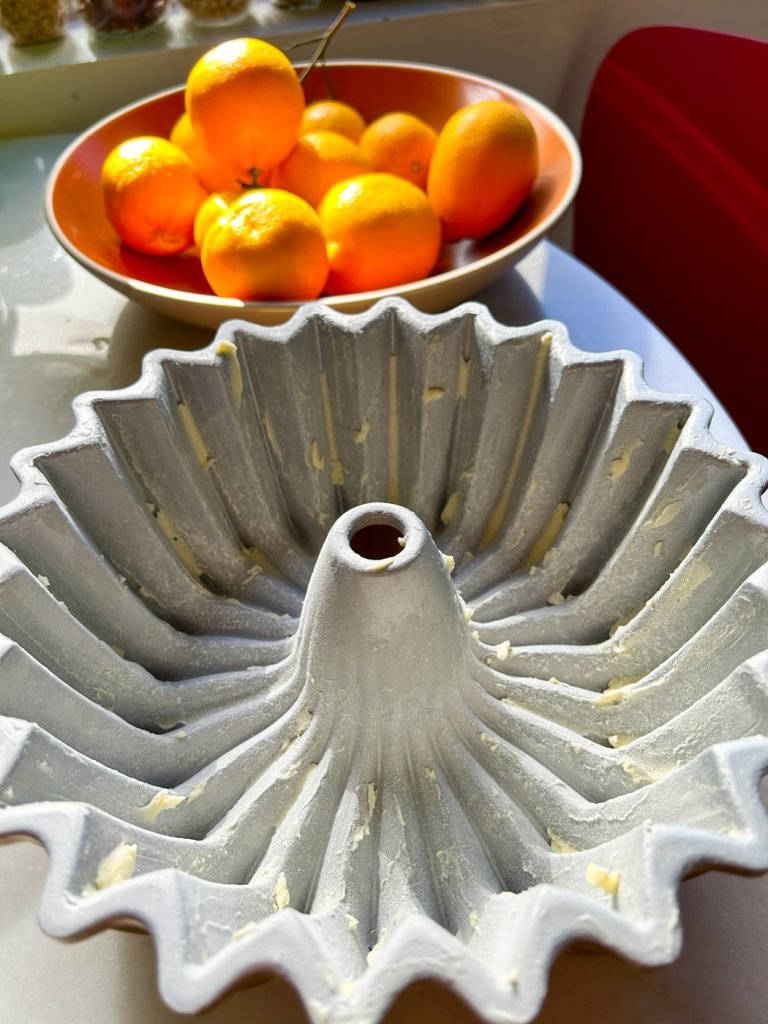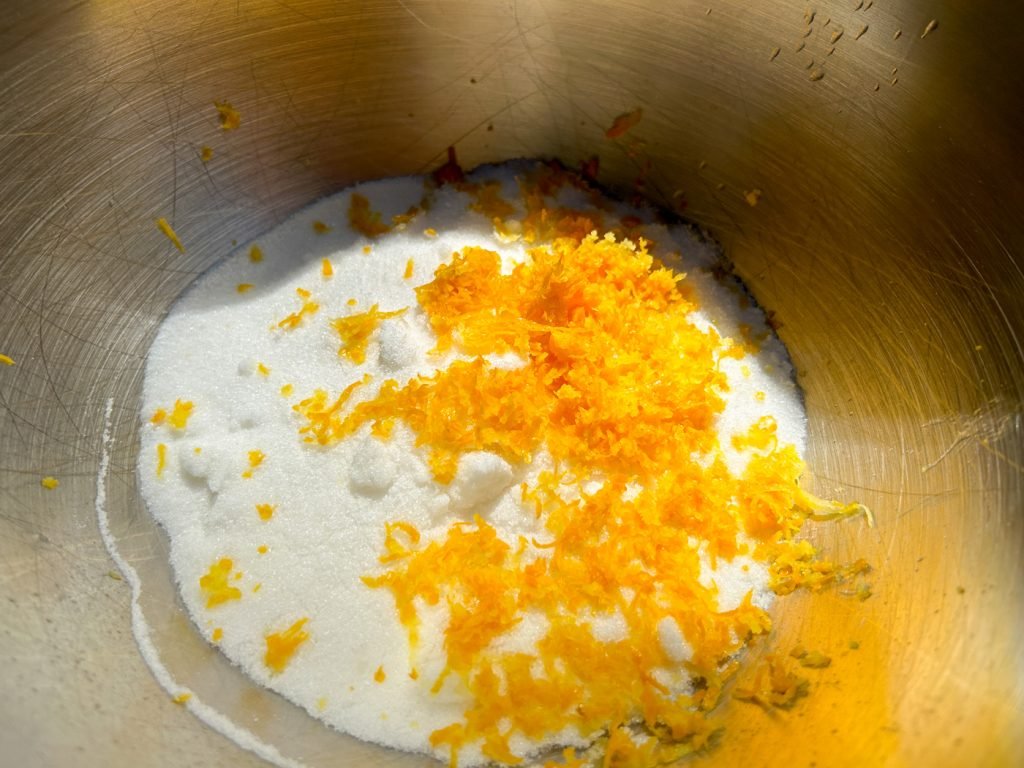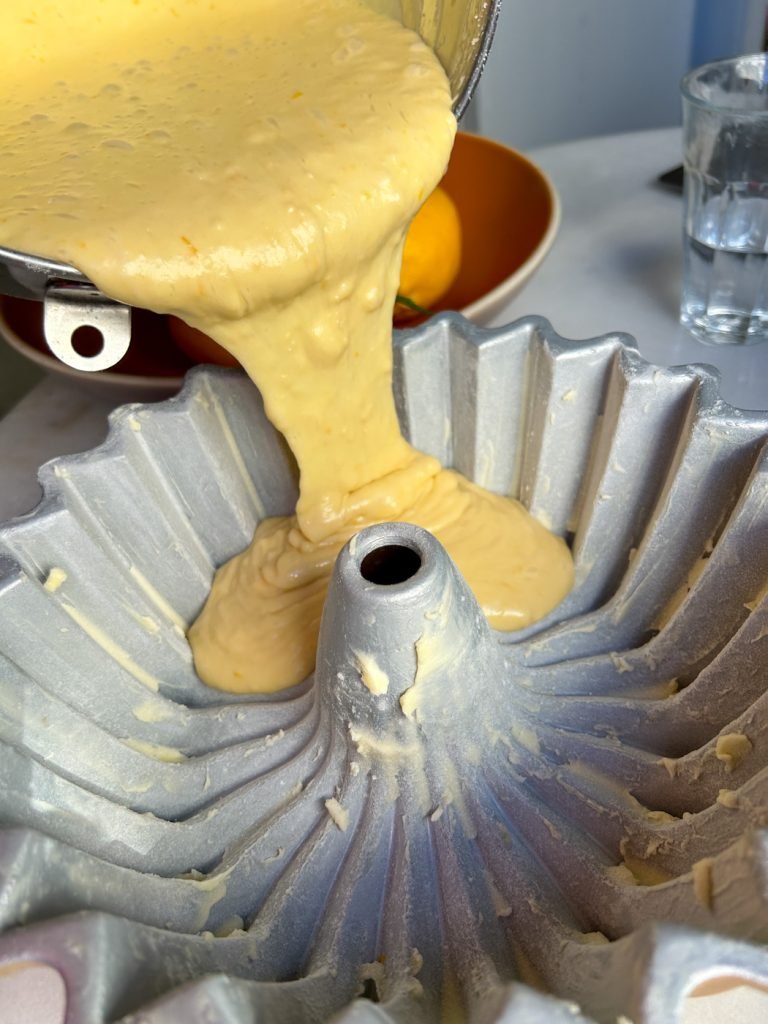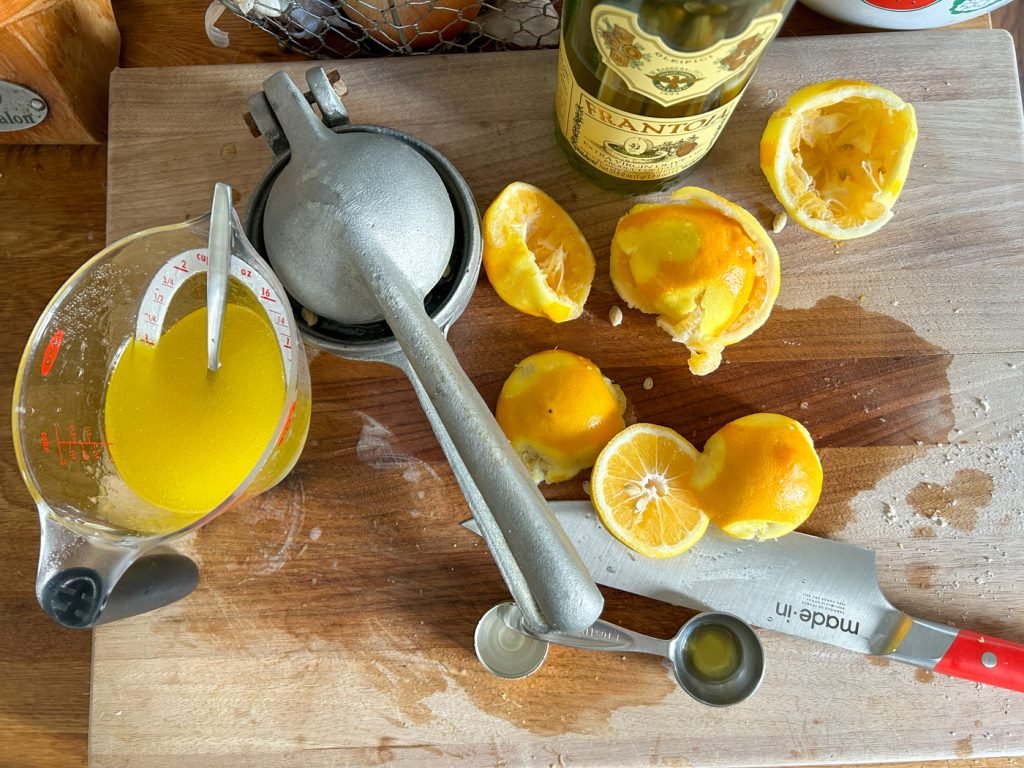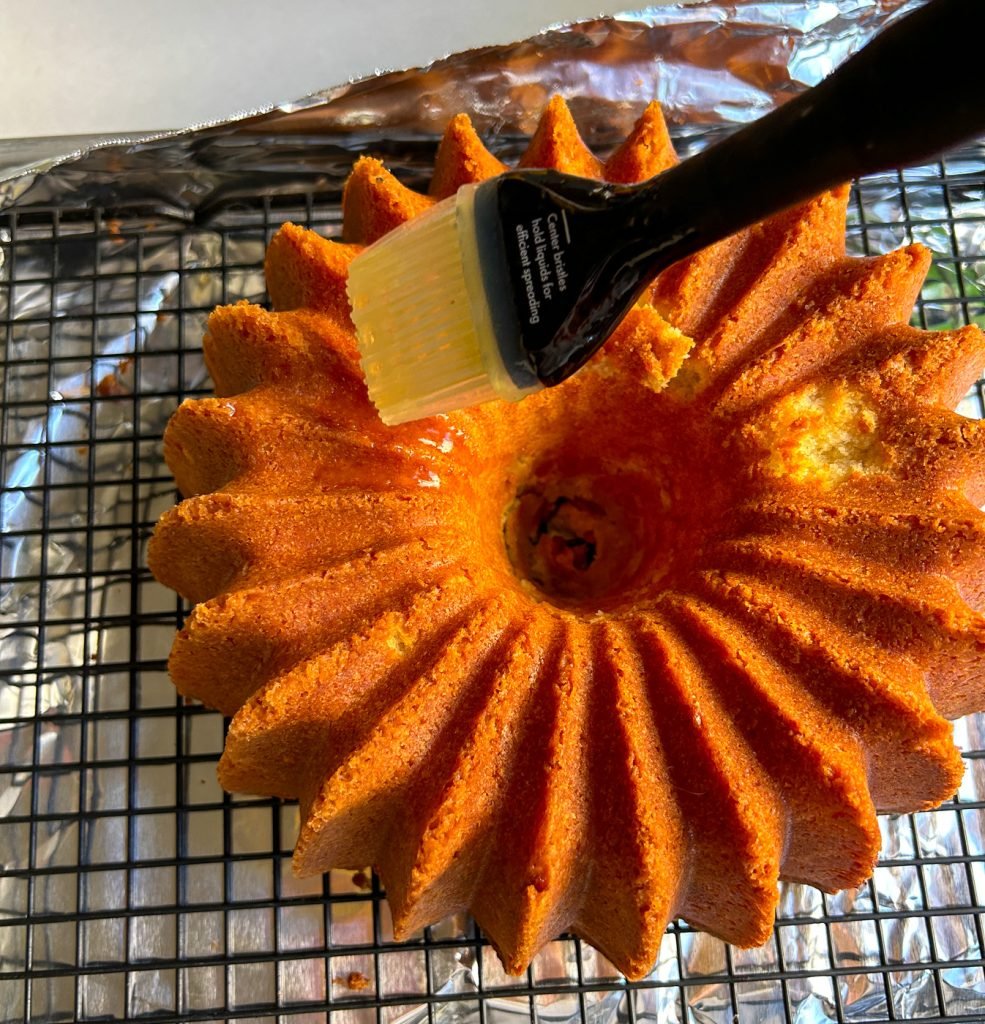Claire Saffitz's Meyer Lemon Bundt Cake
Bundt cakes often look better than they taste. That's because, at the end of the day, you're dumping a bunch of cake batter into a big heavy mold that needs to cook for a while to have stability, but also (very often) dries the cake out in the process. So how do you make a big, impressive-looking bundt cake that actually tastes good? You soak it as soon as it comes out of the oven. I've seen recipes for lemon cakes where you cook sugar with lemon juice just until the sugar dissolves to make a lemon syrup and then pour that over the cake (see: The Barefoot Contessa); but I've never seen one where you mix raw lemon juice with sugar and olive oil and pour that over the cake. That was until I encountered Claire Saffitz's Meyer Lemon Bundt Cake in her new cookbook What's for Dessert?.
Pucker Up
This is the lemon bundt cake to rival all lemon bundt cakes. Not to show off, but we started the bundt cake journey in our backyard picking Meyer lemons off our Meyer lemon tree (well not ours, technically, we rent).
The hardest part of the whole recipe is the very first step: buttering and flouring your plan. From Nicole Rucker I learned that your best strategy when coating a bundt pan is to use lots of softened butter and to get it into all the crevices. I'm very liberal with the butter here because can you imagine anything worse than going to the trouble of making a lemon bundt cake only to have it stick to the pan?
Let's Make a Meyer Lemon Bundt Cake
After that, it's all fun and games. You zest the lemons into sugar and pinch it with your fingers to extract the oils (very satisfying, I must say).
Then you add eggs, stick it under a mixer, and beat until it looks custardy. To that you add a lot of olive oil -- I used some fruity good stuff (Frantoia, which you can buy online) -- until it emulsifies, then the dry ingredients (flour, etc.) alternating with milk, lemon juice, and vanilla. Voila: your batter.
Into the oven it goes to bake (and wow, does it rise up); meanwhile, you make your magical potion of lemon juice, olive oil, and sugar.
Glaze That Cake
When the cake comes out of the oven, you let it rest for fifteen minutes and then poke holes in it and start brushing with the glaze. The scary part comes when you flip it out and pour the glaze all over the other side. Confession: the first time I turned the pan over, the cake didn't detach! Even with all of that butter. So I flipped it back over and used a paring knife to really make sure it wasn't sticking; the real trouble spot was the middle section, where I had to stab like Norman Bates to get it done. But get it done I did and then I brushed the rest of the glaze all over the gorgeous cake.
So the next time you go to the trouble of making a bundt cake, have a glaze standing by or your efforts won't be worth it. (Exception: a sour cream cake which will be plenty moist.) Shellacked with the raw Meyer lemon juice, sugar, and olive oil, this cake becomes a bright and peppy affair that'll delight your guests at your next dinner party. Not ifs, ands, or bundts about it.
Claire Saffitz's Meyer Lemon Bundt Cake
A bright and citrusy recipe from Claire Saffitz's "What's for Dessert?"
Room temperature butter (about 3 to 4 tablespoons) and flour for the pan
3 cups all-purpose flour
2 1/2 teaspoons baking powder
1 teaspoon Diamond Crystal kosher salt
1/2 teaspoon baking soda
1 tablespoon finely grated Meyer lemon zest (from about 2 lemons)
1 3/4 cup sugar + 2/3 cup for the glaze
3/4 cup Meyer lemon juice, divided
1 cup whole milk, room temperature
2 teaspoons vanilla extract
4 large eggs, room temparture
1 1/3 cups extra-virgin olive oil
Preheat the oven to 350. Schmear the softened butter all around your 12-cup metal Bundt pan: you really want to work it into the crevices or anywhere the batter might have a tendency to stick (like the middle tube). When it's nicely greased, spoon in enough flour to coat and pat all around, tapping out any excess.
In a medium bowl, whisk together the flour, baking powder, salt, and baking soda. Set aside.
In the bowl of a stand mixer, zest your lemons directly into the sugar (you can zest more than the recipe calls for if you like it extra puckery). Use your fingers to pinch the zest into the sugar -- it should smell amazing.
Now that you've zested the lemons, you can juice them. Mix together 1/4 cup of the juice with the milk and vanilla. Set aside.
Add the eggs to the bowl of the stand mixer with the sugar and the zest and beat with the whisk attachment on medium speed until it looks thick and mousse-y, about 3 minutes. Very gradually stream in the 1 1/3 cups of olive oil and beat until the mixture looks smooth, thick, and emulsified.
Reduce the speed to low, add 1/3rd of the dry ingredients, 1/2 of the milk mixture, 1/3rd dry, 1/2 milk, and finish with the dry. Don't overwork here; finish mixing with a rubber spatula, scraping the bottom of the bowl, making sure it's evenly mixed.
Pour the batter into the Bundt pan and bake for 45 to 55 minutes until a cake tester comes out clean. Set aside to cool for 15 minutes.
Meanwhile, make the glaze by whisking together the remaining 1/2 cup Meyer lemon juice, 2/3rds cup granulated sugar, and 2 tablespoons olive oil. Whisk vigorously with a fork until the sugar mostly dissolves.
While the cake is still warm, use a toothpick to poke holes all over the surface and brush it with some of the glaze. Then very carefully use a paring knife to make sure the cake isn't sticking to the sides of the pan and flip it out on to a wire rack set over a cookie sheet lined with aluminum foil. Poke more holes with a toothpick and brush with the rest of the glaze; any glaze that drips on to the cookie sheet, pour back on. Let the cake cool completely.
Dessert
American
bundt, cake, Claire Saffitz, lemon, Meyer lemon
Related Posts:

